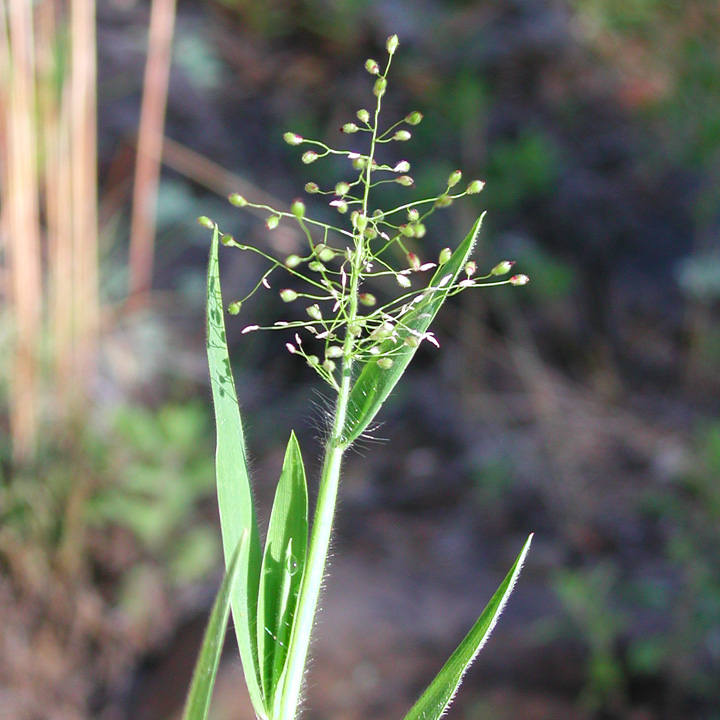Dichanthelium
|
Family: Poaceae |
Plants perennial; cespitose, sometimes rhizomatous, sometimes with hard, cormlike bases, often with basal winter rosettes of leaves having shortly ovate to lanceolate blades, these often sharply distinct from the blades of the cauline leaves. Culms 5-150 cm, herbaceous, hollow, usually erect or ascending, rarely sprawling, in the spring often spreading, sometimes decumbent in the fall, usually branching from the mid- or lower culm nodes in summer and fall; branches rebranching 1-4 times, terminating in small secondary panicles that are usually partly included in the sheaths. Cauline leaves 3-14, usually distinctly longer and narrower than the rosette blades; ligules of hairs, membranous, or membranous and ciliate, sometimes absent; pseudoligules of 1-5 mm hairs often present at the bases of the blades immediately behind the true ligules; blades usually distinctly longer and narrower than those of the basal rosette, cross sections with non-Kranz anatomy; photosynthesis C3. Inflorescences panicles, terminal on the culms and branches; sterile branches and bristles absent; disarticulation below the glumes. Primary panicles terminating the culms, developing April-June(July), sometimes also in late fall, usually at least partially chasmogamous, often with a lower seed set than the secondary panicles; secondary panicles terminating the branches, produced from (May)June to fall, usually partially or totally cleistogamous. Spikelets 0.8-5.2 mm, not subtended by bristles, dorsally compressed, surfaces unequally convex, apices unawned. Glume apices not or only slightly gaping at maturity; lower glumes 1/5-3/4 as long as the spikelets, 1-5-veined, truncate, acute, or acuminate; upper glumes slightly shorter than the spikelets or exceeding the upper florets by up to 1 mm, 5-11-veined, not saccate, apices rounded to attenuate. Lower florets sterile or staminate; lower lemmas similar to the upper glumes; lower paleas sometimes present, thin, shorter than the lower lemmas; upper florets bisexual, sessile, plump, usually apiculate to mucronate, sometimes minutely so, or subacute to (rarely) acute; upper lemmas striate, chartaceous-indurate, shiny, usually glabrous, margins involute; upper paleas striate; lodicules 2; anthers 3. Caryopses smooth; pericarp thin; endosperm hard; hila round or oval. x = 9. Name from the Greek di, twice and anth, flowering, a reference to the two flowering periods. |

